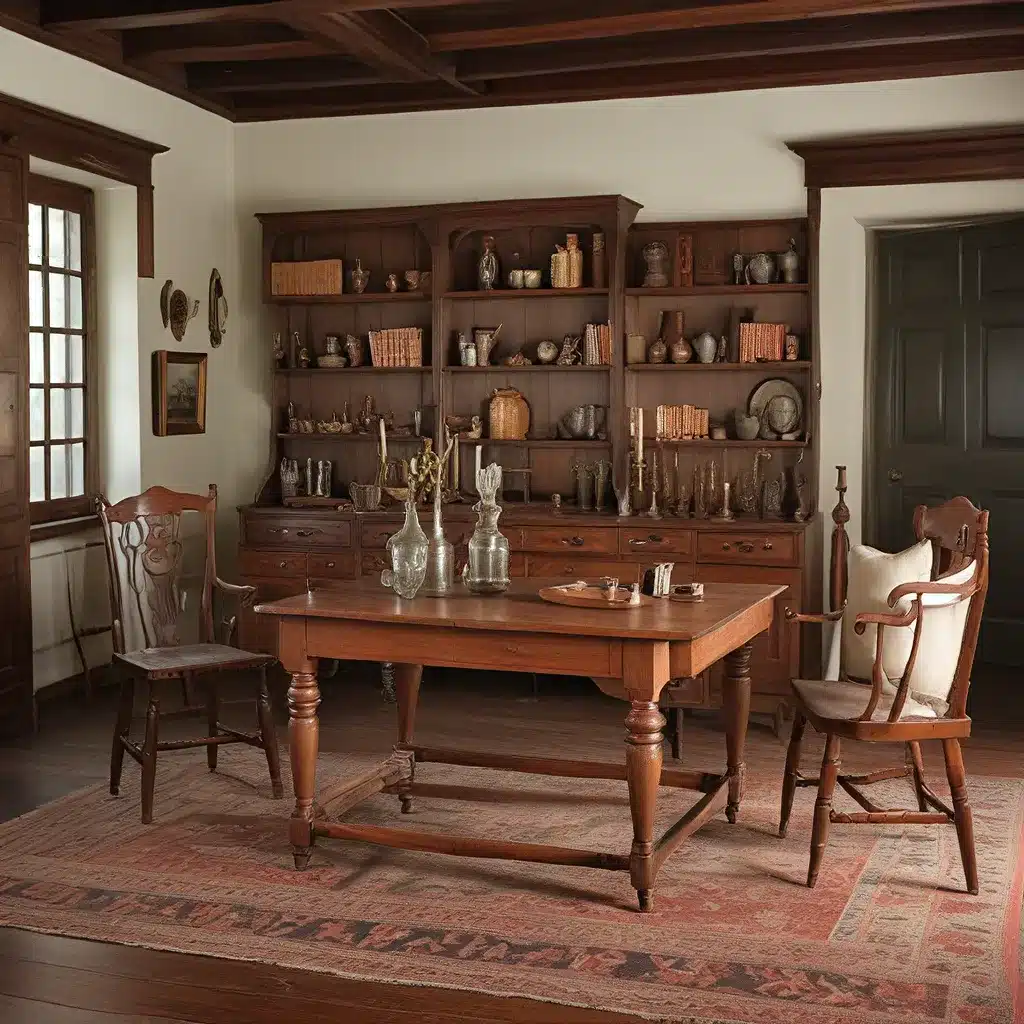
Uncovering the Secrets of Early American Craftsmanship
Have you ever wondered what lies beneath the polished surfaces of the antique furniture in your home? The untold stories of the skilled artisans who crafted these pieces have largely been lost to the sands of time. But what if I told you that we can still uncover the secrets of the forgotten furniture makers of the Colonial era?
It all started with a chance discovery in the archives of the American Philosophical Society. While sifting through their collections, a historian named Jay Robert Stiefel stumbled upon a remarkable find – the account book of an English joiner named John Head, who had immigrated to Philadelphia in the early 18th century.
John Head’s account book is a veritable treasure trove of information, chronicling the bustling commerce, crafts, and lifestyles of early Philadelphia. It’s the earliest and most complete account book to have survived from any cabinetmaker working in British North America or Great Britain during that time period.
Stiefel’s discovery was a true eureka moment – a chance to glimpse into the lives and work of the talented artisans who helped shape the material culture of Colonial America. As he dove deeper into the records, a vivid picture emerged of a vibrant community of shopkeepers, cabinetmakers, chairmakers, clockmakers, and other skilled craftspeople.
Uncovering the Lost Furniture Makers of Roanoke
But John Head’s story is just the tip of the iceberg. As I delved further into the history of Colonial-era furniture makers, I stumbled upon another intriguing mystery – the fate of the ill-fated Roanoke Colony.
In 1587, a group of English settlers, led by John White, arrived on Roanoke Island off the coast of what is now North Carolina. They were tasked with establishing a permanent settlement, but when White returned three years later, he found the colony abandoned, with no trace of its inhabitants. This event has become known as the “Lost Colony of Roanoke,” and it’s one of the enduring mysteries of early American history.
Recent archaeological discoveries have shed new light on the fate of the Roanoke settlers. It seems that at least some of them may have survived and integrated into nearby Native American communities, taking their skills and craftsmanship with them.
Excavations at sites near Cape Creek on Hatteras Island and in the Albemarle Sound region have uncovered a treasure trove of artifacts, including a 10-carat gold signet ring, a small piece of slate that may have been used as a writing tablet, and the hilt of an iron rapier – all of which suggest the presence of European settlers in the area.
These findings have sparked a renewed interest in the possibility that the Roanoke colonists may have blended with local Native American tribes, preserving their furniture-making skills and passing them down through the generations. It’s a tantalizing prospect, and one that has captured the imagination of historians and archaeologists alike.
The Enduring Legacy of Colonial Furniture Makers
As I delved deeper into the stories of these forgotten furniture makers, I couldn’t help but be struck by the enduring legacy they left behind. In a time when mass-produced furniture has become the norm, the painstaking craftsmanship and attention to detail of these early American artisans is a refreshing reminder of the value of handmade goods.
Take, for example, the Sampson Joinery Shop, an 18th-century workshop that was recently discovered in Duxbury, Massachusetts. This remarkable find has given us a rare glimpse into the daily lives and work of Colonial-era furniture makers.
The shop, which is about the size of a single-car garage, is packed with clues about the tools and techniques used by its owner, Luther Sampson, a planemaker and shingle maker. The fixed benches that line the walls, the tool racks, and the telltale marks left by planes and saws all paint a vivid picture of the bustling activity that once took place within these walls.
As I walked through the Sampson Joinery Shop, I couldn’t help but feel a deep sense of connection to the past. The ghosts of the craftsmen who once worked here seemed to linger in the air, their stories waiting to be uncovered. It’s a humbling reminder that the furniture we cherish today is the product of countless hours of painstaking labor, each piece imbued with the unique fingerprint of its maker.
Preserving the Artistry of the Past
As I reflect on these discoveries, I can’t help but feel a sense of awe and reverence for the skilled artisans who helped shape the material culture of Colonial America. Their stories, long forgotten, are slowly being brought back to life through the tireless efforts of historians, archaeologists, and preservationists.
But the work is far from over. The Sampson Joinery Shop, for example, is in desperate need of stabilization and preservation, lest it succumb to the ravages of time. And who knows what other treasures might be waiting to be discovered, hidden away in the dusty archives or buried beneath the soil?
That’s why I’m so excited about the work being done by organizations like the Unfinished Furniture Association. By championing the preservation of these historic spaces and artifacts, they’re helping to ensure that the stories of our forgotten furniture makers will continue to be told for generations to come.
So, the next time you find yourself admiring a beautifully crafted piece of antique furniture, take a moment to imagine the hands that shaped it, the lives that were touched by its creation. These are the stories that deserve to be celebrated and preserved, for they are the threads that bind us to our collective past.








